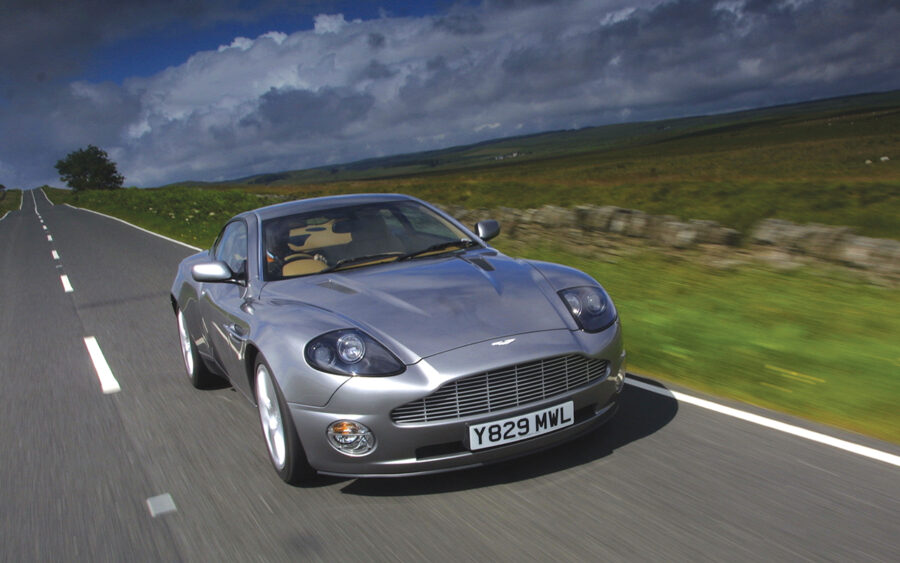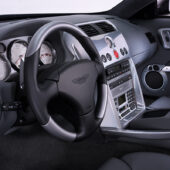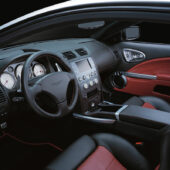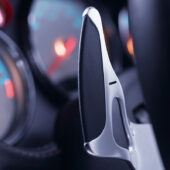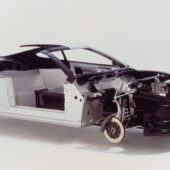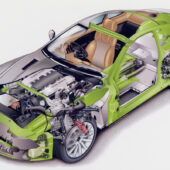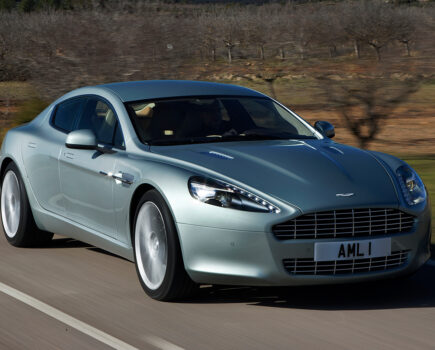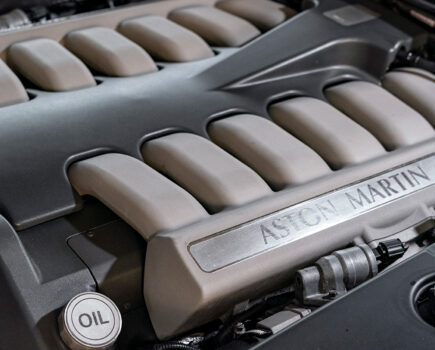The Aston Martin V12 Vanquish marked a fresh start for the company – today, it’s a bona fide modern classic. Here’s how to buy one
Words: Kyle Fortune
A car that signaled the end of Aston Martin’s history at its Newport Pagnell production facility while introducing a bold, more technical modern future, the Vanquish was a pivotal model for the British sports car maker. Aston Martin’s hand-built sports cars had always appealed to a small group of loyal buyers who’d put up with ancient technology in cars that often had performance that was too much for their underpinnings.
With the V12 Vanquish, Aston Martin took a radical new technical and design direction, one that mated an all-new platform created in partnership with Lotus to a body attributed to the then-design chief Ian Callum. The platform was unlike anything any of its rivals were building at the time, using a mix of extruded aluminium and composite materials, bonded and riveted together to create a structure that was significantly stiffer and stronger than any Aston Martin before it. That gave the company’s chassis and powertrain engineers half a chance of producing a car with performance and agility to at least match – and ideally better – its key rivals from Italy – something no Aston Martin since the 50s could truly claim to do.
The Vanquish did exactly that, even if that supposed ‘lightweight’ and strong platform brought with it a 1,835kg kerbweight, making it a relative heavyweight alongside its trimmer Ferrari and Lamborghini alternatives. Likewise, the 5.9-litre V12’s 466hp was down on power alongside the Italians, but so great was the leap over the company’s predecessor models that the Vanquish was given a fairly easy time in contemporary reviews. Rightly so, because while it might have lacked the numbers to stop the clock as quickly as its supercar rivals, it retained much of Aston Martin’s traditional character and charm, albeit wrapped in gorgeous styling and utilising the latest technology. This was the first Aston Martin in a while that really could hold its own among the supercar elite rather than be the charming also-ran.
Vanquish production would run for just over six years; the last cars were produced in 2007 with just shy of 2,600 examples built. The standard V12 Vantage was effectively replaced in 2004 by the V12 Vanquish S, which saw the engine’s power increate to a healthier 527hp, and added chassis revisions including the previously optional Sports Dynamic Package to sharpen up the dynamics. The Vanquish S gained the title of Aston Martin’s fastest production car, with that increased power allowing it a top speed in excess of 200mph – which, during this time, was pretty much the number that was required for entry to be considered a proper supercar. Visually, the Vanquish S gained a slightly revised grille shape, a lower front splitter and a slightly extended boot lip to aid stability while chasing that higher top speed.
The final 50 Vanquish S built came off the line in Newport Pagnell – the last Astons to do so – in Ultimate Edition guise. These were Vanquish S specification but gained Ultimate Black paint, which was claimed had tones of red and blue in it and specific to the final 50 cars only. Each got a build plaque denoting its number inside, with the interior finished in semi-aniline leather, black chrome detailing and a leather headliner. A handful of cars also were built to Ultimate specification but painted white because it suited their eventual UAE destination better.
In 2019 the Vanquish’s original designer, Ian Callum, revealed his Vanquish 25 by Callum Design, limited to a series of just 25 cars. Each sees their power grow to 580hp as well as interior and exterior design and trim revisions intended to correct, says the designer, some of the things that had niggled him since the original car’s introduction.
An all-new, faster and more powerful Vanquish arrived in 2012, based on the brand’s VH architecture, but failed to capture the magic of its modern-classic predecessor. Production ended in 2018.
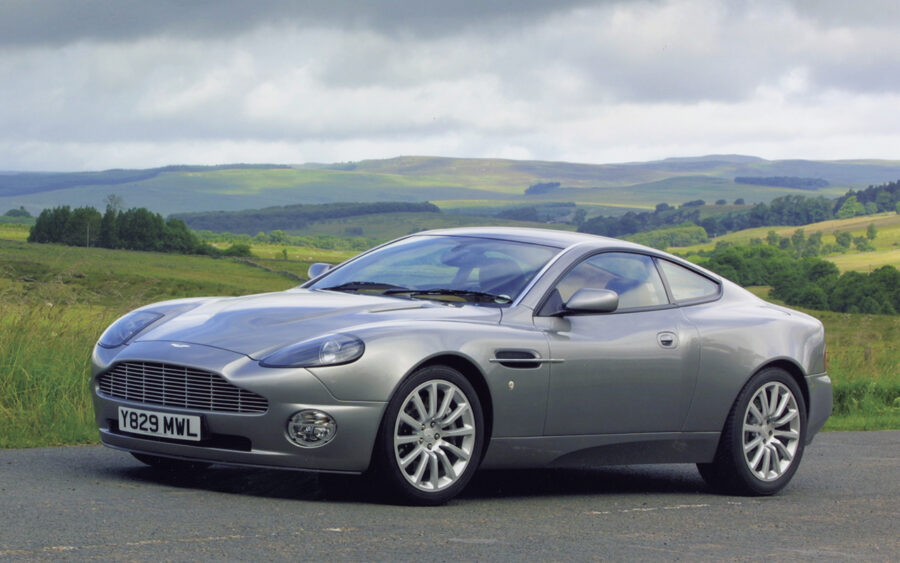
Bodywork
Like its platform, the V12 Vanquish uses aluminium in its construction, these panels using a hot metal process called ‘superforming’ which allows the metal to be shaped into complex surfaces. These panels were then largely hand finished to fit, the V12 Vanquish the last Aston Martin to be so extensively hand built. Unsurprisingly, that means any bodywork required will be expensive, so be sure to check for any signs of previous work and inspect each panel for fit – the panel gaps should be consistent between all the body parts.
It’s worth checking any drainage holes in the bodywork are clear and check the windscreen for fit, because if it’s been replaced incorrectly water can get behind it and cause issues. Have a poke around underneath and check the sill mounts for corrosion, as well as the rear wheel arch mounting brackets which can also corrode. Be sure to check the windows in the doors drop slightly before you open the doors; if previous owners have been hasty getting in and not paused momentarily to allow the window to drop, the window seal can be damaged. Other issues related to the doors include knocking from inside them caused by loose earth straps; a relatively easy fix that simply requires a slightly longer bolt to be used.
While you’re looking at the body, keep an eye out for signs of bubbling paintwork, which signals galvanic corrosion under the paint. Typically, signs of this are usually seen around panel edges, like the door bottoms, around the wheelarches and anywhere where the paint may have become damaged and let water in. Signs of corrosion or a reaction between materials is also possible around elements like the side strakes in the front wings. Any sign of bubbling paint will mean a trip to the paint shop to be corrected, which is never an inexpensive experience.
Engine and transmission
The V12 Vanquish is powered by a development of the DB7’s V12 engine. Often referred to as a 6.0-litre, it’s actually a 5.9-litre unit, it being all aluminium with a 60-degree V12 configuration. The cylinder heads feature dual overhead camshafts and four valves per cylinder, with a sequential multiport fuel injector system. Utilising fast-burn combustion technology, heated oxygen sensors monitor the oxygen content of the exhaust gasses and fine tune the fuelling and ignition timing to suit. All this is mated to no less than six catalytic convertors, each containing their own oxygen sensors. In the standard V12 Vanquish that resulted in 466hp, with the later Vanquish S gaining slightly different cylinder heads and combustion chambers as well as improved fuel injectors and a differing ECU map. Some owners of early cars had S specification elements retro-fitted to increase the power and performance.
John McGurk, of Aston Martin specialists McGurk Performance Cars, says the engines are generally good, though regular servicing is essential. It’s a false economy to miss a service due to low usage, so have it checked out annually. The V12 is a proven unit, but it’s unrealistic to expect such a high performance engine of this vintage not to have some foibles and maladies, most of which though are related to the electronics controlling it. Failing plugs and coils as a result of heat damage or water ingress will manifest as misfiring, but this can also be attributed to PCV valves in the vacuum pipes, which like the later Aston Martin DB9 allow oil into the intake system and collecting in the air filter housings, so check it regularly. It’s worth checking this out before investing in new coils and plugs, because it’s a less expensive repair. Misfiring can also be a result of oil leaks from the cam cover spark plug seals, so it’s worth checking these out, too. Chaffed wiring, as a result of the loom moving in the bulkhead cut-outs thanks to the engine rocking can cause gremlins in relation to starting and running.
Fuel pumps (there are two) can be problematic, particularly if the car has been sat idle for a while. Starting and running it regularly will help keep the fuel from evaporating in the system and help prevent issues. Keep the battery on a trickle charger/conditioner, too – there’s a charging socket located in the boot for doing so. As with any engine, keep a strict eye on oil levels. If it gets too low you’ll be looking at possible worn valve guides or big ends; conversely, be careful not to over-fill it with oil, because doing so can blow seals around the cams or crankcase. None of this is particularly unusual for this type of high-performance engine, and meticulous, regular servicing should make for a trouble-free experience.
One area of concern is around the exhausts, which are notorious for rotting. A lot of this is attributed to the heat shielding around them, which result in trapped moisture and they’re expensive to replace. Exhaust valves can stick, too, so a thorough inspection of the system is always worthwhile.
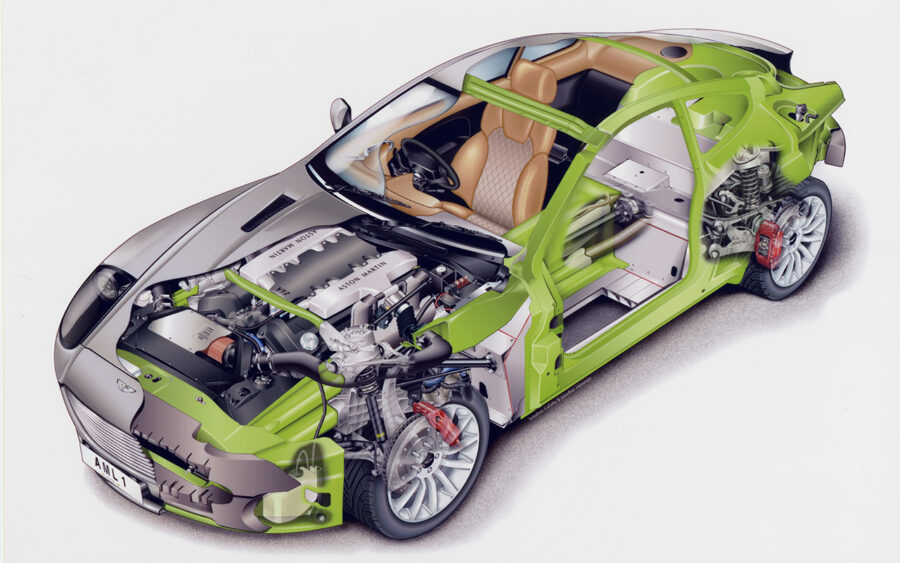
The Vanquish’s V12 engine was only ever offered from the factory with an automated manual transmission with two pedals and paddle-shifters. Not all customers were fans of this, and Aston Martin Works did offer the potential replace that system with a manual transmission, with the cup-holder in the transmission tunnel in the early cars providing the perfect placement for the gearstick – it a more difficult conversion with the later cars.
The automated manual did have its detractors when new, and there’s no doubt that it does feel pretty ponderous in its shifting compared to systems available today. A Tremec T56 gearbox with a Magneti Marelli paddle-shift, the clutch is a single plate operated automatically by a concentric slave cylinder, with clutch and gear operations performed by a Transmission Control Unit (TCU) and a series of hydraulic solenoid valves and actuators. Using the paddles means using Select Shift Mode (SSM), with fully automatic shifting taken care of by Auto Shift Mode (ASM). The transmission always defaults to Select Shift Mode on ignition. Despite concerns for the clutch life, the sort of occasional high-days use isn’t likely to cause any premature wear on the clutch.
The biggest issues around the transmission are around the gear position sensors. This problem is largely focussed on the earlier cars, and likely resolved by now with later magnetic sensors fitted from the later cars and the S model. The paddle-shifted system requires a bit of patience, and in traffic it’s best not to creep, if possible, because it’s heavy on the clutch doing so. Replacing it will cost in excess of £4,000.
While the majority of Vanquish models remain paddle-shifted, as many as 100 went back to Aston Martin Works to be retrofitted with a conventional three-pedal layout, with a six-speed manual transmission borrowed from the Aston Martin DB7 GT. This conversion still being possible today if you wish.
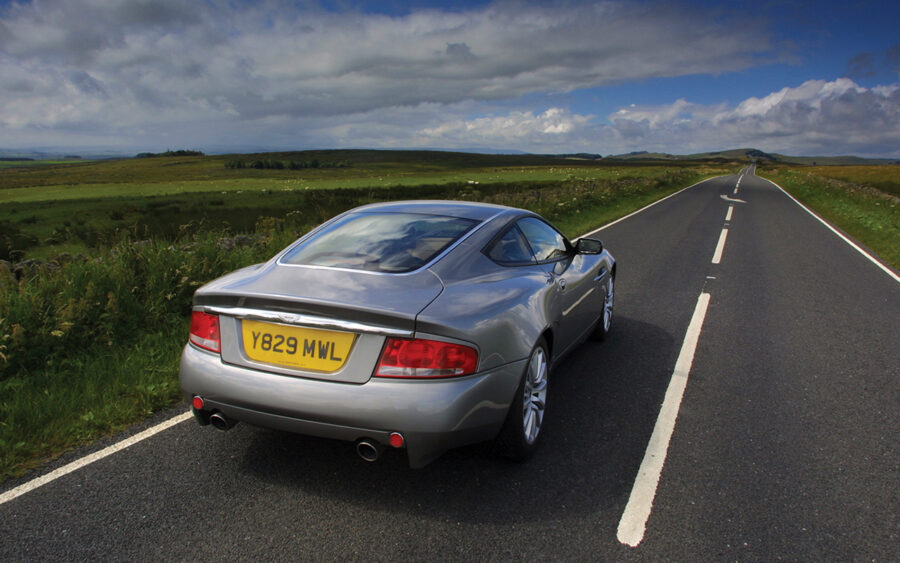
Suspension, steering and brakes
There’s nothing particularly complicated about the suspension on the V12 Vanquish, which features double wishbones up front with coil springs and dampers these mounted on a steel engine cradle. This features all the mounts for the hydraulic power steering system, lower suspension arms and bushings as well as the anti-roll bar. The strut mounts feature the attachments for the upper wishbones. The rear system is an independent steel subframe assembly – mounted on four bushes – with aluminium upper and lower control arms carrying the rear hub assemblies and springs and dampers.
Naturally, dampers will wear, and may leak, though it’s not an expensive problem to resolve. What will be more costly is if some of the bushes in the control arms need replacing, because they’re not always removable and will require a complete arm. Doing so will sharpen up the handling so it’s worth doing properly to experience the V12 Vanquish at its best.
The steel sub frames the suspension hangs off are prone to rotting to the point of being weakened; it’s an expensive job to remove and replace these. Some specialists will repair these, then repaint or powdercoat for protection; this is likely to be a cheaper fix than getting a new subframe from Aston Martin which is excess of £5,000.
The V12 Vanquish’s brakes are fine for normal road use, with the S gaining bigger items. A set of discs and pads in normal use will likely do you good service for around 20,000 miles.
Interior and trim
The interior is relatively simple and surprisingly hard-wearing, with little going wrong inside. With many of the switches, stalks and suchlike shared with Ford and Jaguar, finding cost-effective replacements shouldn’t be too tricky, either. The sat nav, either the earlier system or the later larger-screen one, is painfully antiquated these days, so buy a decent mount for your smartphone and use that instead.
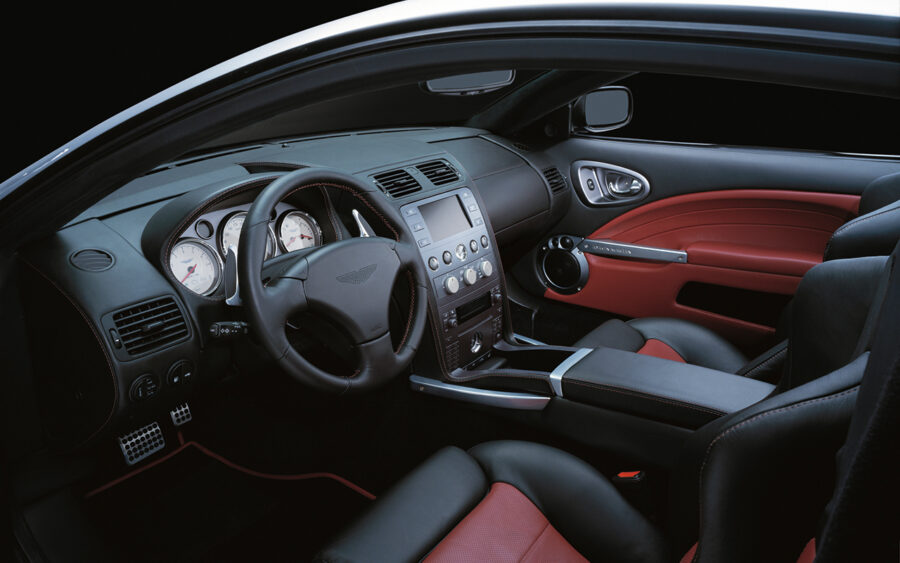
Aston Martin V12 Vanquish: our verdict
A transitional model for Aston Martin that spans the old hand-built tradition of the earlier cars but also embraces an all-new future, the V12 Vanquish is a beautiful, talented all-rounder with the ability to shock with performance. It’s no more or less reliable or expensive to run as any of its rivals, although be sure to buy the best, most historied car you can afford – and put aside a decent amount annually to keep it in its finest order. Do that and it’ll provide huge entertainment on the road, and, as it ages, possibly increase in value too.

